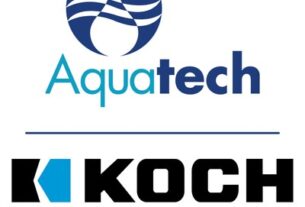BriaCell Therapeutics Corp. and its majority-owned subsidiary BriaPro Therapeutics have advanced their immuno-oncology program by filing a provisional patent for the underlying platform, known as TILsRx. The development centers on a multivalent approach designed to engage multiple tumor-associated and immune pathway targets simultaneously. By addressing immune suppression and T cell exhaustion, TILsRx aims to reinvigorate tumor-infiltrating lymphocytes (TILs) within the tumor microenvironment, potentially enhancing anti-tumor activity and improving clinical outcomes. The platform’s design prioritizes selective cancer cell targeting within the tumor microenvironment to foster a favorable tolerability profile while pursuing robust therapeutic activity. The filing signals BriaCell and BriaPro’s commitment to expanding their immunotherapy portfolio through a platform that can be adapted to various cancer indications and combined with existing BriaCell cell-based vaccine programs.
TILsRx: A Multivalent Immuno-Oncology Platform for Activating TILs
The TILsRx platform represents a strategic shift in how immunotherapies can be deployed against cancer. Rather than relying on a single target or mechanism, TILsRx is built to simultaneously engage multiple tumor-associated antigens and immune pathways. This multivalent strategy seeks to address two critical challenges in cancer immunotherapy: immune suppression within the tumor microenvironment and T cell exhaustion that can limit the durability and strength of anti-tumor responses. By coordinating multiple functional components, the platform aims to activate TILs, improve their binding to tumor cells, and sustain their activity over time.
TILsRx agents are described as multifunctional, combining elements that promote cancer cell killing with those that enhance immune stimulation. The approach includes antibodies, soluble receptor constructs, and cytokines that work in concert to reprogram the tumor microenvironment in favor of effective immune responses. Among the design features highlighted are components that can both unlock immune checkpoints and stimulate T cell function, creating a balanced profile of efficacy and safety. The overarching objective is to maximize on-target anti-tumor activity while minimizing off-target toxicity, a balance that could translate into improved clinical responses across multiple cancer indications.
A key feature of the platform is its ability to optimize manufacturing efficiency while maintaining flexibility. TILsRx consolidates shared core components that streamline production, enabling faster development cycles and potentially reduced costs. At the same time, the platform is built to accommodate elements that target specific cell surface antigens, allowing BriaCell and BriaPro to tailor therapies to individual tumor biology. This combination of standardized manufacturing with customizable targeting enables a scalable, future-ready immunotherapy platform that can adapt as new targets are identified in the evolving landscape of cancer immunology.
Within the TILsRx framework, a number of specific components are described as instrumental to the platform’s mechanism of action. Soluble CD80 is noted for its dual role as an immune checkpoint inhibitor and as an immunostimulator, enabling a two-pronged approach to reinvigorating T cell activity. Anti-CD3 antibodies are positioned as potent activators of T cells, providing a robust signal to stimulate T cell proliferation and cytotoxic function. Interleukin-21 (IL-21) is highlighted for boosting cytotoxic T cell activity, augmenting the immune system’s ability to recognize and destroy cancer cells. Anti-STEAP1, targeting STEAP1—a cancer antigen expressed in several tumor types, including prostate cancer—adds another layer of selectivity by focusing immune engagement on cancer cells while sparing healthy tissue.
An early candidate target within TILsRx is B7-H3, a tumor-associated antigen that is overexpressed in prostate, lung, breast, pancreatic, and ovarian cancers, while showing limited expression in normal tissues. This selectivity is central to the platform’s anticipated tolerability profile, supporting the broader aim of delivering effective anti-tumor activity with manageable safety. Collectively, these elements position TILsRx as a modular platform capable of addressing a spectrum of solid tumors by orchestrating immune activation, tumor targeting, and checkpoint modulation in a single therapeutic framework.
The platform’s developers emphasize that TILsRx is designed to support activation and persistence of TILs within the tumor microenvironment. By facilitating stronger engagement of TILs with tumor cells and simultaneously dampening inhibitory immune signals, the platform aims to sustain anti-tumor responses over time. The strategic integration of soluble co-stimulatory molecules, checkpoint modulation, and targeted antibodies seeks to deliver a concerted attack on cancer cells while preserving healthy tissue integrity. In practice, this could translate into enhanced tumor clearance and longer-lasting clinical benefit for patients across diverse cancer subtypes.
From a strategic perspective, the TILsRx platform is envisioned to be compatible with a broad range of immunotherapeutic strategies. The shared core components are designed to support manufacturing efficiency, while the platform’s flexible targeting framework provides the ability to incorporate novel cancer targets as scientific understanding advances. This includes potential future targets that may emerge from ongoing research in tumor immunology and cancer vaccine development. The result is a therapeutically versatile platform that can be expanded alongside BriaCell’s existing pipeline, including BriaCell’s cell-based cancer vaccine programs, to potentially achieve synergistic effects in treating cancer.
The leadership team behind BriaCell and BriaPro has articulated a clear vision for how the multivalent approach could deliver meaningful clinical benefits. They expect the TILsRx platform to be highly selective and highly effective, maximizing on-target efficacy while minimizing off-target toxicity. This balance, they contend, would improve clinical responses across multiple indications and potentially broaden the range of cancers that can be treated with immunotherapy. The platform’s developers also highlight the potential for rapid expansion of the proprietary pipeline through the addition of new immunotherapy targets identified in the future, underscoring the platform’s adaptability in response to emerging scientific insights.
In public statements, BriaPro and BriaCell leaders have described TILsRx as a forward-looking initiative intended to establish a new class of safe and effective cancer therapeutics. They emphasize the combination of core manufacturing elements with targeted components to achieve both efficiency and precision. This strategy is presented as a potential differentiator in a crowded immuno-oncology landscape, offering a modular framework that can be adapted to various tumor settings and combined with BriaCell’s vaccine programs to potentially produce complementary therapeutic benefits.
Early Targets, Biologic Components, and Therapeutic Rationale
A central theme in the TILsRx development is the incorporation of components that can address multiple mechanisms of immune activation and tumor recognition. By combining a co-stimulatory signal with agents that can modulate immune checkpoints, the platform seeks to transform the immune contexture of tumors. The soluble CD80 component is highlighted for its ability to function as both an immune checkpoint inhibitor and an immunostimulatory signal, a dual capacity that can augment T cell activity while relieving tumor-induced suppression. This dual-action concept is intended to enhance the breadth and durability of anti-tumor responses.
Anti-CD3 is placed at the core of TILsRx’s T cell activation strategy. This antibody class is known for strong T cell engagement and activation, which can lead to robust cytotoxic responses against cancer cells. IL-21 further augments this response by improving cytotoxic T cell function and the quality of the anti-tumor immune attack. The inclusion of anti-STEAP1 targets ensures that a tumor-associated antigen is directly engaged, adding a level of specificity to the TILsRx platform’s action against cancer cells while attempting to minimize collateral damage to normal tissues.
B7-H3 is singled out as an early candidate target due to its overexpression across multiple tumor types, including prostate, lung, breast, pancreatic, and ovarian cancers. The differential expression pattern—high in tumors and relatively limited in normal tissue—provides a compelling therapeutic rationale for pursuing B7-H3 as an initial focus. Leveraging B7-H3 within a multivalent framework could enable simultaneous modulation of immune pathways and direct targeting of cancer cells expressing this antigen, potentially amplifying anti-tumor effects while maintaining a favorable safety profile.
The platform’s architecture suggests a strategic emphasis on combining these components within a single, coherent therapeutic modality. By aligning co-stimulatory signals, cytokine-mediated enhancement, and targeted antibody actions, TILsRx aspires to create an integrated mechanism that mobilizes TILs, enhances their tumor recognition, and sustains their anti-tumor activity in the face of tumor-associated immunosuppression. The end goal is to translate these mechanistic advantages into clinically meaningful outcomes for patients with solid tumors, particularly those characterized by immune-evasive tumors and limited responsiveness to existing therapies.
The BriaCell and BriaPro leadership articulate a conviction that the multivalent approach can deliver activity across a spectrum of cancers. They suggest that this platform might synergize with other BriaCell assets, including cell-based cancer vaccine programs, to create combinatorial therapeutic opportunities. Such synergy could involve using TILsRx agents to prime the tumor microenvironment for vaccine-induced immune responses, thereby enhancing the overall therapeutic effect. The potential for cross-program synergy reinforces the strategic rationale for investing in TILsRx as a foundational platform with wide-reaching implications for BriaCell’s immuno-oncology portfolio.
Strategic Implications for BriaCell and BriaPro
The development strategy described for TILsRx emphasizes a pathway toward rapid advancement through preclinical and clinical stages. The platform’s multivalent design is positioned to support accelerated iteration, enabling BriaPro to explore multiple cancer indications in parallel while refining core components that contribute to manufacturing efficiency. This approach could facilitate a more efficient translation from preclinical models to human studies, potentially shortening development timelines and enabling earlier patient access to innovative immunotherapies. The platform’s modularity also supports iterative improvements, as new immunotherapy targets emerge from ongoing discovery efforts in oncology.
From a pipeline perspective, TILsRx offers BriaPro a means to diversify its immuno-oncology program with agents capable of targeting cell-surface antigens and modulating costimulatory and inhibitory pathways. The potential to couple these agents with BriaCell’s existing cancer vaccine programs presents an attractive avenue for combination strategies. In such an integrated approach, vaccines may prime the immune system to recognize tumor-associated antigens, while TILsRx agents amplify T cell responses and sustain tumor eradication. The synergy between mAb-like targeting, co-stimulation, and cytokine support could yield a complementary therapeutic dynamic that heightens overall anti-tumor efficacy.
The leadership commentary underscores a belief that the TILsRx platform can be developed in a cost-conscious manner without compromising performance. By leveraging shared core components, BriaCell and BriaPro anticipate manufacturing efficiencies that translate into scalable production and potentially lower per-dose costs. The expectation is that these efficiencies will support broader clinical exploration across multiple cancer indications, increasing the likelihood of identifying patient subgroups most likely to benefit from multivalent immunotherapy. The company’s leadership also emphasizes potential activity against various cancers, along with the prospect of synergy with their vaccine programs to create a more comprehensive immuno-oncology strategy.
Hyphenated statements from BriaPro’s leadership highlight the platform’s role in enabling rapid pipeline expansion. They describe TILsRx as a vehicle for quickly adding novel immunotherapy targets as discoveries arise, while maintaining a cost-effective development approach. This framing suggests that the platform is intended not only to treat existing indications but also to adapt to evolving scientific insights and emerging clinical needs. The overarching narrative portrays TILsRx as a flexible, forward-looking platform capable of addressing a diverse array of solid tumors through strategic combinatorial approaches and continued innovation.
Regulatory Landscape, Risk, and Forward-Looking Considerations
The press materials emphasize that the disclosures include forward-looking statements that reflect current expectations about the platform’s potential. These statements are inherently uncertain and subject to various risks and assumptions. The forward-looking language typically highlights anticipated tolerability profiles, selectivity, efficacy across multiple indications, potential synergy with other BriaCell vaccine programs, and the platform’s ability to advance from preclinical to clinical stages. The company acknowledges that actual results may differ from these expectations due to a range of factors, including scientific, regulatory, manufacturing, and market dynamics.
BriaCell and BriaPro’s disclosures describe a framework under which risks and uncertainties are outlined in governance documents and securities filings. These conditions include standard risk factors associated with biopharmaceutical development, such as the reliability of preclinical models, the translational challenges of translating laboratory findings into human efficacy and safety, regulatory approvals, and competitive dynamics in the immuno-oncology space. The statements are designed to inform readers about potential trajectories while recognizing that outcomes are not guaranteed and may be influenced by unforeseen events or changing conditions in the market or regulatory environment.
In addition to developmental and clinical risks, there are manufacturing considerations related to multivalent agents. The platform’s design emphasizes manufacturing efficiency, yet the complexity of producing combinatorial biologics with multiple active components presents its own set of challenges. Scale-up, quality control, and consistency of product batches across indications are all potential areas where risk could impact timelines and cost profiles. The company frames these concerns within the broader context of early-stage development, where uncertainties are comparatively higher than in late-stage or marketed therapies.
Market dynamics, reimbursement climates, and physician adoption are also relevant to TILsRx’s potential success. Even with a compelling mechanism and a strong safety profile, real-world efficacy and patient access depend on demonstrating meaningful clinical benefit, competitive positioning, and positive health economics. The articulation of potential benefits must withstand scrutiny from regulatory authorities, clinicians, patients, and payers who evaluate new cancer therapies through multi-faceted lenses. The platform’s real-world impact will likely hinge on robust clinical data, transparent communication of risk-benefit profiles, and a demonstrated ability to deliver durable responses in target patient populations.
The company notes that more information on risks and uncertainties is described in detail in its regulatory filings and representative risk sections. While these disclosures provide important context, they also indicate that investors and stakeholders should interpret forward-looking statements with caution given the inherent unpredictability of drug development. The forward-looking statements are intentionally targeted to reflect BriaCell and BriaPro’s plans as of a given date, and the company acknowledges that it does not have a duty to update these statements except as required by applicable law.
Within the broader regulatory landscape, BriaCell and BriaPro must navigate the pathways that govern immuno-oncology therapeutics, including preclinical data requirements, evidence of clinical benefit, and post-approval safety monitoring. The platform’s developers recognize that regulatory expectations evolve as science advances, and that the success of TILsRx will depend on delivering reproducible, high-quality data that demonstrate meaningful clinical outcomes for patients. The strategic emphasis on selectivity, safety, and potential synergy with other BriaCell assets aligns with a cautious yet forward-looking regulatory approach designed to optimize the chance of favorable outcomes across multiple regulatory jurisdictions.
BriaCell and BriaPro: About the Companies
BriaCell Therapeutics Corp. is a clinical-stage biotechnology company focused on developing novel immunotherapies to transform cancer care. The company seeks to advance innovative approaches that harness the immune system to fight cancer, delivering potential clinical benefits to patients who may have limited treatment options. BriaCell emphasizes its commitment to advancing immuno-oncology research through a robust pipeline, scientific collaboration, and strategic partnerships that can accelerate the translation of laboratory discoveries into patient-ready therapies. The company positions itself as a dynamic player within the cancer immunotherapy space, aiming to offer new options for patients and clinicians.
BriaPro Therapeutics Corp. operates as BriaCell’s majority-owned subsidiary and focuses on preclinical immunotherapy programs. BriaPro is dedicated to developing binding agents and proteins designed to enhance the body’s natural cancer-fighting capabilities. The company’s mission centers on advancing binding modalities and protein-based approaches that aim to augment immune surveillance, improve recognition of cancer cells, and boost the effectiveness of endogenous anti-tumor responses. BriaPro’s work complements BriaCell’s broader strategy by exploring additional modalities and targets that can expand the overall immuno-oncology portfolio.
Together, BriaCell and BriaPro position TILsRx as a pivotal platform intended to broaden the scope of immuno-oncology programs. By pursuing multivalent strategies and integrating efforts across their pipelines, the companies seek to deliver next-generation cancer therapies that can address unmet medical needs. The platform’s emphasis on selective targeting, manufacturable design, and potential synergy with cell-based vaccines reflects a comprehensive approach to advancing cancer immunotherapy from discovery through clinical testing.
Forward-Looking Statements and Risk Disclosures (Continued)
The joint communications from BriaCell and BriaPro stress that forward-looking statements are subject to substantial risks and uncertainties. These statements often rely on assumptions about future events and conditions that are not guaranteed to occur. Readers should consider that actual results may differ from expectations due to a variety of factors, including scientific challenges, regulatory decisions, manufacturing hurdles, and shifts in the competitive landscape. The companies caution that the described benefits, timelines, and development plans are speculative and contingent on many variables beyond their control. The intent of including these statements is to convey management’s current expectations while acknowledging the inherent uncertainties of bringing new cancer therapies to market.
In summary, the TILsRx platform represents BriaCell and BriaPro’s strategic investment in multivalent immunotherapy designed to activate and sustain TIL responses within the tumor microenvironment. The platform’s architecture, components, and early targets—particularly B7-H3—are positioned to address immune suppression while offering a tolerability profile shaped by selective tumor targeting. The leadership team communicates a vision of rapid, cost-conscious development with the potential for cross-program synergy, including compatibility with BriaCell’s vaccine initiatives and the prospect of expanding the platform to additional indications as scientific understanding evolves. The companies’ disclosures reflect a cautious but optimistic outlook, underscoring the importance of robust data and ongoing engagement with regulatory authorities as they advance preclinical and clinical exploration of TILsRx.
Conclusion
BriaCell Therapeutics Corp. and BriaPro Therapeutics have laid out a comprehensive plan for a multivalent immuno-oncology platform that aims to transform how tumor-infiltrating lymphocytes are engaged within the tumor microenvironment. By simultaneously targeting multiple tumor-associated and immune pathways, TILsRx seeks to overcome immune suppression and T cell exhaustion, promoting stronger, more durable anti-tumor responses. The platform’s components—soluble CD80, anti-CD3, IL-21, and anti-STEAP1—work in concert with a primary focus on B7-H3 as an early target, reflecting a strategy to balance efficacy with a favorable safety profile. The emphasis on manufacturing efficiency and adaptability suggests BriaCell and BriaPro anticipate scalable development and the ability to incorporate future discoveries to broaden the platform’s reach across cancer indications. Leadership emphasizes the potential for synergy with BriaCell’s existing cancer vaccine programs, which could create complementary therapeutic dynamics and enhance overall clinical benefit. While the trajectory includes the inherent uncertainties of biopharmaceutical development and regulatory review, the TILsRx initiative represents a forward-looking effort to establish a versatile, next-generation immunotherapy platform with the potential to address a range of solid tumors.



